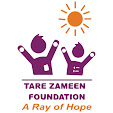India is known to be rich in diverse cultures, religions, languages, and traditions. It is also known for its democracy and population, but the apathy of the country's education system is still in the evaluative mode.
The gender inequality and the patriarchy system are highly rampant. The education system's grade is undoubtedly high in India, but the reach and impartiality are a matter of concern.
Violence against women and girls is the most invasive violation of human rights in the nation today. There is a subtle and blatant impact on the development and so deeply embedded in cultures worldwide that it is more or less invisible.
Gender disparity has been a significant issue in India's mission to achieve universal elementary education. To overcome the problems faced by girls and women, several measures have been initiated across the country. But, we need to understand whether these initiatives have been beneficial.
Gender Background in Education in India
India accounts for 30% of the world's illiterate population, and 70% are women. The problem of gender disparity and discrimination began with access to schooling and the further continuation of studies.
Once the girls are enrolled in school, they are less likely to continue their education than boys. Female education has been accepted to have a strong correlation with other dimensions of human and social development. Even today, many communities continue to under-invest in female education than in male education.
The deeply embedded underestimation of female labor, more identified with reproductive or household fields, triggers many communities' assumption that educating females brings low returns and skills are required in reproductive and domestic socialization than a few years of schooling.
The association of female work for fulfilling domestic responsibilities, including childbearing, has led to a deep-seated cultural connection of girls with marriage and family institutions.
Changing Patterns of Gender Uniformity and Equality in Education
In recent years, India has shown a considerable improvement at every level of education for both girls and boys. Studies and reports have shown significant progress in national literacy levels and particularly female illiteracy during the last few decades.
The gender gap in literacy has even narrowed down during that time. While we have seen such progress in education enrolments, some states are seen as 'educationally backward' with long-standing gendered divisions in society.
Parental preference for male children remains a strong characteristic determining household preference and performance relating to children's education and life opportunities. In almost all states, poor parents from marginalized sections make choices supporting their sons while deciding about their children's education.
The preservation of both male and female students in school and higher studies remains an area of concern regardless of the recent improvement in the learning situation.
Research suggests a range of factors work to progress student education and achievement. Some of these include the availability of adequate facilities, including teaching and learning materials and textbooks, good school management, quality teaching, low teacher-pupil ratios, and community participation.
There have been several innovative programs for promoting educational access started both by the government and NGOs. NGO models have tested a variety of creative attempts to stimulate demand for education for girls.
Further, it should be noted that 'mainstreaming' gender is not just a subject of more incredible administrative action in gender equity. Mainstreaming is successfully achieved when civil society, political leadership, and the state work in different yet complementary ways to push for positive changes.
Several gaps continue to exist in research on gender and education in India. Several tough questions need to be asked and researched to focus on the underlying problems to support gender equity improvements across India.








0 Comments